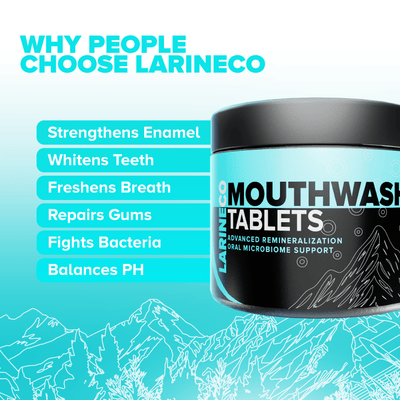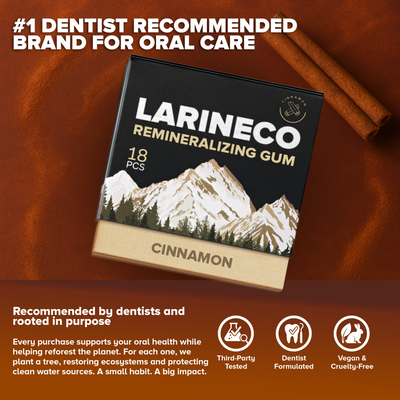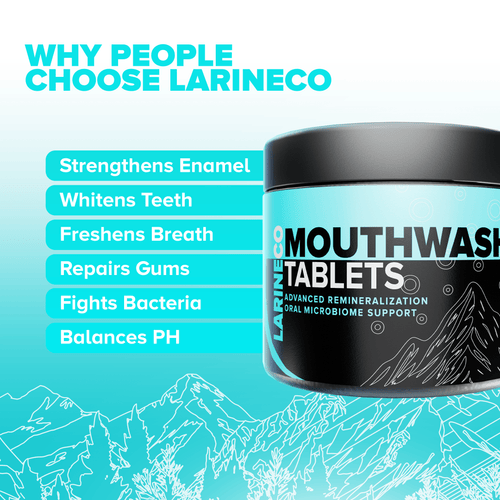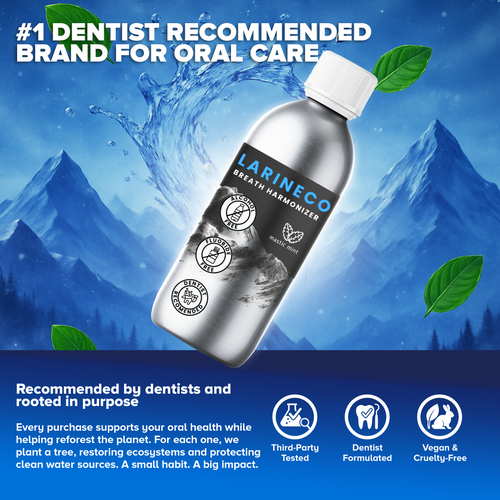How to Improve Gum Health Naturally: Common Issues, Causes, and the Benefits of Mastic Gum
Understanding Your Gums: The Foundation of a Healthy Smile
Your gums are more than just pink tissue, they’re the vital support system for your teeth, keeping them anchored and protected. Firm, healthy gums act as a barrier against bacteria while ensuring your teeth stay stable and strong. But when neglected, they can become inflamed, recede, or even develop disease, leading to pain, sensitivity, and tooth loss. The good news? With the right care, you can prevent and even reverse many common gum issues. Let’s explore how to keep your gums in top shape, naturally and effectively.
What Are the Most Common Gum Issues?

Gingivitis
Gingivitis is the mildest form of gum disease, triggered by plaque buildup along the gumline. It causes redness, swelling, and bleeding during brushing or flossing. While usually painless, it's a sign that your gums are under attack, and if ignored, it can progress to more serious conditions.
Periodontitis
This advanced gum disease goes beyond inflammation. Periodontitis breaks down the connective tissue and bone that hold your teeth in place. You may notice gum pockets, receding gums, or loose teeth. Without treatment, it can lead to permanent tooth loss and impact your overall health.
Gum Recession
When gums pull away from the teeth, it exposes the sensitive roots underneath. This not only causes discomfort but also increases your risk of decay and infection. Gum recession can stem from harsh brushing, clenching, or chronic inflammation, and once it starts, it’s difficult to reverse without intervention.
Bleeding or Swollen Gums
Bleeding gums aren’t normal; they’re often your mouth’s first distress signal. Swelling, tenderness, or bleeding during brushing can indicate inflammation or early gum disease. If left unaddressed, these symptoms can worsen and lead to tissue and bone damage.
Persistent Bad Breath
Chronic bad breath (halitosis) goes beyond food or hygiene. It’s often a result of bacterial buildup below the gumline, especially in cases of gum disease. If breath mints and brushing don’t help, it’s likely a sign of deeper issues that require professional care.
What Causes Gum Problems?
Poor Oral Hygiene Habits
Inconsistent brushing and flossing allow bacteria to thrive around the gumline. This leads to plaque formation, which irritates and inflames gum tissue over time. Daily neglect is often the first step toward chronic gum issues.
Plaque and Tartar Buildup
Plaque is a sticky film of bacteria that forms on teeth. If not removed, it hardens into tartar, which can only be cleaned professionally. Both contribute heavily to gum irritation, inflammation, and eventually gum disease.
Smoking and Tobacco Use
Tobacco reduces blood flow to the gums, weakening your body’s ability to fight infections. Smokers are significantly more likely to develop gum disease and often experience delayed healing after treatment.
Hormonal Changes (e.g., pregnancy, menopause)
Shifts in hormone levels increase gum sensitivity and inflammatory response. This makes gums more vulnerable to plaque and bacteria during periods like puberty, pregnancy, menstruation, and menopause.
Lack of Key Nutrients
Deficiencies in vitamin C, D, and other essential nutrients impair gum tissue repair and immune defense. A poor diet can weaken the gums’ natural resistance to infection and inflammation.
Family History of Gum Disease
Genetics can predispose you to gum problems even with good oral care. If gum disease runs in your family, you may need more frequent dental checkups and targeted prevention strategies.
Medical Conditions Like Diabetes
Chronic illnesses such as diabetes impair circulation and immune response, making gums more susceptible to infection. Gum disease, in turn, can make it harder to manage blood sugar, creating a harmful cycle.
How to Take Care of Your Gums
Brushing and Flossing the Right Way
Brush twice a day using a soft-bristle toothbrush and nano-hydroxyapatite toothpaste for many more benefits. Don’t skip flossing, it's the only way to remove plaque from between teeth and below the gumline where brushes can't reach.
Rinsing with Antibacterial Mouthwash
Use an alcohol-free, antibacterial mouthwash to reduce plaque, kill bacteria, and soothe inflamed gums. It also helps reach areas your toothbrush or floss may miss.
Seeing Your Dentist Regularly
Routine checkups (at least twice a year) allow early detection of gum issues before they escalate. Professional cleanings also remove hardened tartar that daily brushing can’t eliminate.
Eating Foods That Support Gum Health
A diet rich in vitamins C and D, omega-3s, and antioxidants helps reduce inflammation and supports tissue repair. Crunchy fruits and vegetables also stimulate saliva flow, which protects your gums.
Quitting Harmful Habits Like Smoking
Smoking weakens gum tissue and hinders healing. Quitting is one of the most impactful steps you can take for long-term gum and overall oral health.
Staying Hydrated and Reducing Stress
Drinking water helps flush away food debris and bacteria. Managing stress keeps your immune system strong, reducing your risk of inflammation-related gum problems.
Mastic Gum Benefits for Gum Health
What Is Mastic Gum?
Mastic gum is a resin harvested from the mastic tree (Pistacia lentiscus), traditionally used for oral and digestive health. When chewed, it forms a firm, sticky gum that releases active compounds directly into the mouth.
Reduces Gum Inflammation Naturally
Mastic gum contains anti-inflammatory compounds that help soothe irritated gums and reduce swelling. Regular chewing may ease symptoms of gingivitis and early gum disease without relying on synthetic chemicals.
Antibacterial and Antimicrobial Properties
Mastic gum has been shown to fight oral pathogens like Streptococcus mutans and Porphyromonas gingivalis, which are major contributors to plaque and gum disease. This helps reduce harmful bacteria that cause infections and bad breath.
Helps Heal and Strengthen Oral Tissues
Rich in natural bioactive compounds, mastic gum supports the regeneration of gum tissue. It may aid in tightening loose gums and improving overall gum resilience over time.
Stimulates Saliva for Natural Cleaning
Chewing mastic gum stimulates saliva production, which helps wash away food particles and neutralize acids. Increased saliva also supports the delivery of essential minerals to the gums and teeth. At the same time, saliva also helps improve enamel repair.
A Gentle, Natural Alternative to Harsh Products
Unlike alcohol-based mouthwashes or synthetic antiseptics, mastic gum offers a milder approach to gum care. It’s free from irritants and suitable for people with sensitive gums or those seeking a natural oral care routine.
Conclusion: A Natural Ally for Your Gum Care Routine
Looking for a clean, effective way to care for your gums? LarineCo’s mastic gum range blends time-tested tradition with modern science. It's a natural, everyday solution to reduce gum inflammation, fight bacteria, freshen breath, and strengthen oral tissues without relying on synthetic additives or harsh chemicals. Add it to your routine and let nature do the healing. Combine with other remineralizing products from LarineCo for a complete oral care.











